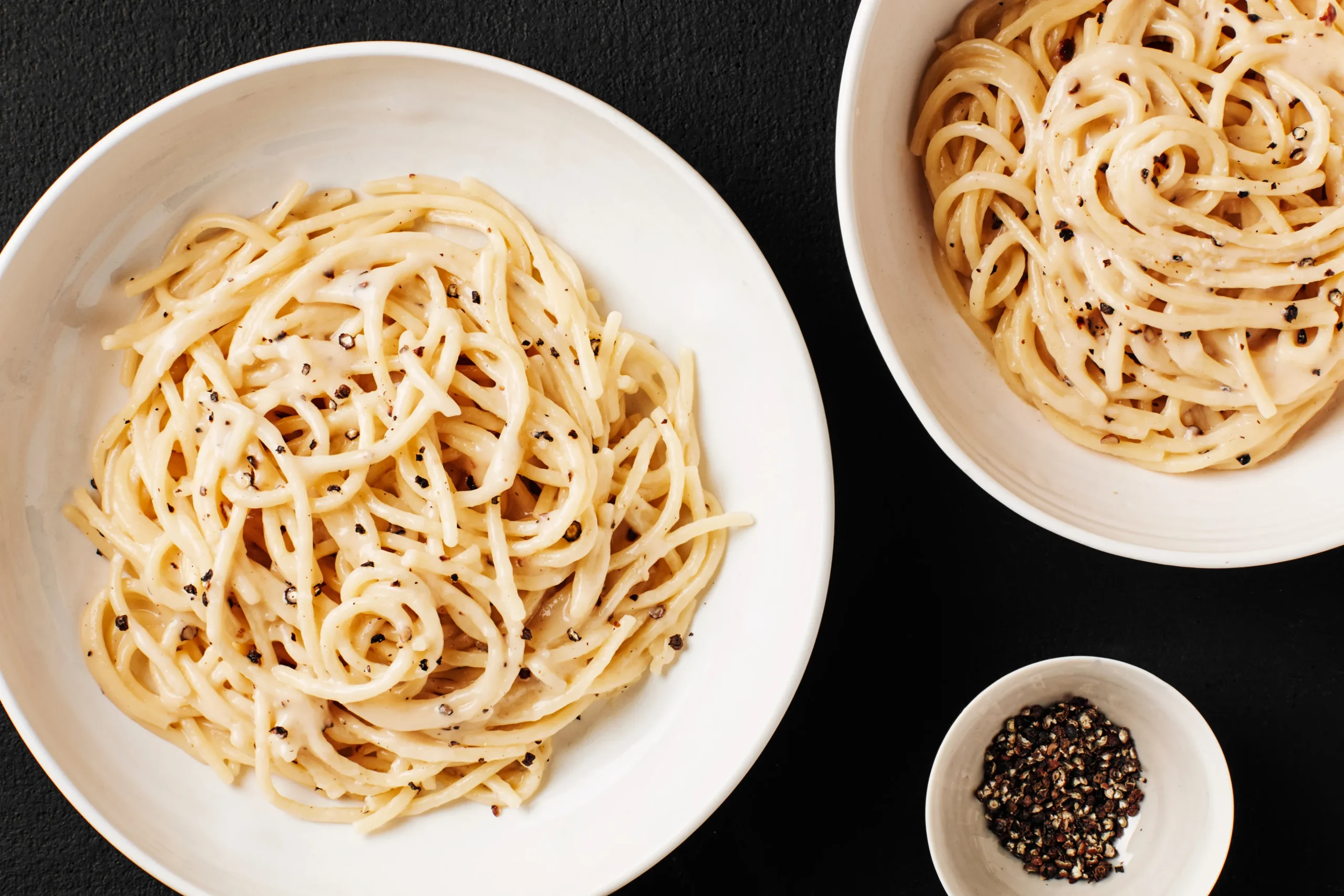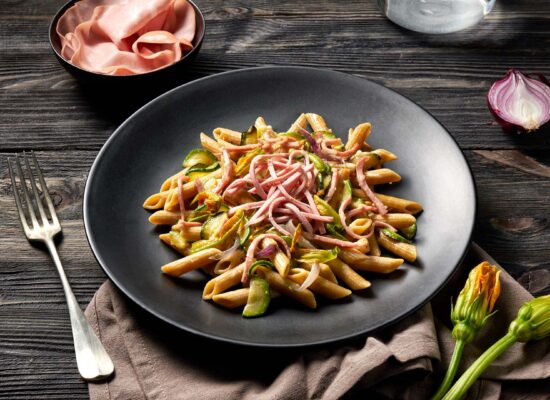Cacio e Pepe: A Timeless Roman Classic
Cacio e Pepe, which translates to “cheese and pepper,” is an emblematic dish from Rome, celebrated for its delightfully simple yet profoundly flavorful profile. This dish, rooted in the culinary traditions of Rome, elegantly combines the sharp tang of Pecorino Romano cheese with the bold spice of freshly cracked black pepper, intertwined with perfectly cooked pasta. Here’s an extended guide on how to prepare Cacio e Pepe at home for six people, ensuring each serving captures the essence of this quintessential Italian recipe.
Ingredients:
For the Pasta :
- 1.5 pounds (24 oz) of spaghetti or tonnarelli, traditional choices that hold the sauce well
- Salt, to season the pasta water for flavor enhancement
For the Sauce:
- 1 cup of finely grated Pecorino Romano cheese, known for its sharp and salty flavor profile
- 2 tablespoons of freshly ground black pepper, or more to taste for that characteristic “pepe” kick
Instructions:
1. Cook the Pasta:
- Boil Water: Begin by bringing a large pot of water to a rolling boil. Generously salt the water, as this is the only chance to season the pasta itself.
- Cook Pasta: Add the pasta, stirring occasionally to prevent sticking, and cook it until al dente, usually about 8-10 minutes depending on the thickness. Remember to preserve about 2 cups of the starchy pasta water before draining, which is crucial for creating the silky sauce.
3. Make the Sauce:
- Prepare Cheese Mixture: In a large mixing bowl, combine the grated Pecorino Romano with the black pepper. Gradually whisk in about 1 cup of the reserved hot pasta water. This process should be done slowly and steadily to ensure the cheese melts smoothly, creating a creamy emulsion without clumping.
- Season: The sauce should have a bold peppery taste and a creamy consistency. Adjust the seasoning with additional pepper if needed, keeping in mind the balance of flavors.
4. Combine and Serve:
- Toss Pasta and Sauce: After draining the pasta, return it to the pot or a warm serving dish. Immediately pour the creamy cheese and pepper sauce over the pasta, tossing vigorously to coat every strand evenly. The heat from the pasta helps further melt the cheese, while the starch in the water combines to form a velvety coating on the pasta.
- Serve Immediately: Dish out the Cacio e Pepe into warm bowls as soon as it’s mixed. The dish is best enjoyed fresh from the stove, as the sauce can thicken and absorb into the pasta as it sits.
Tips:
- Cheese Quality: Opt for high-quality Pecorino Romano for the best results. The cheese’s flavor is pivotal to the dish.
- Pasta Water: Utilize the starchy pasta water efficiently. It’s not only for adjusting the sauce’s consistency but also helps the sauce cling to the pasta.
- Fresh Pepper: Use freshly ground black pepper for a more potent and aromatic kick.
- Serving Suggestion: Cacio e Pepe is traditionally served on its own, allowing the simple yet perfect harmony of cheese and pepper to shine through. However, if desired, you can accompany it with a simple green salad dressed with a light vinaigrette to cut through the richness of the dish.
Cacio e Pepe is more than just a meal; it’s a testament to the beauty of Italian cuisine, where minimal ingredients yield maximum flavor. This dish offers a comforting warmth, ideal for intimate dinners or gathering around the table with loved ones. Dive into this culinary adventure and enjoy the rich, creamy embrace of Cacio e Pepe, a dish that truly stands the test of time and continues to be cherished in kitchens worldwide.

























